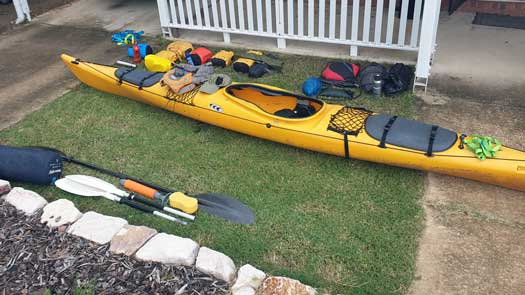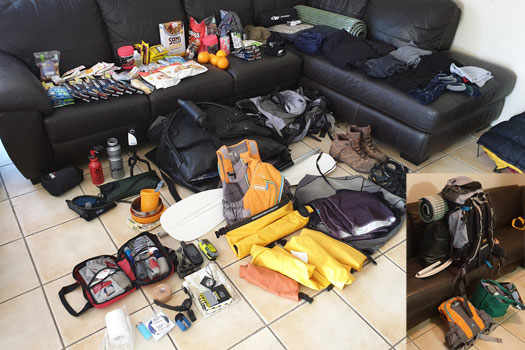Kayaks
What boat should you take?

My gear list for most trips is minimalistic in a way, but also fairly compreshieve for a self-supported trip. This sounds contradictory, but I carried everything I needed and I would have been able to fix most things other than the electronic items.
But before looking at my gear list, a minimalist camping list is a good way to really consider what you need and what you want. If I was heading out for just one or two nights, my gear list would likely match the following minimalist camping list. If I was to head out for five or more nights, it would probably be similar to the full list below, especially on an extended multi-week kayaking trip.
Go stoveless and drop the need for the pot and cooker and take a lightweight plastic jar, or eat straight out of the packaging!
Note that this has barely no margin for error and inadaqant in more extreme environments such as alpine settings that could see snow anytime of the year. Most people probably couldn't live without their mobile phone. Add a solar panel and power bank if you want to be self-sufficient for more than a few days.
My kit was very similar to the above list on short ultralight hikes, though I usually take a tent for comfort. I would likely take a set of both polypro and woolen thermal layers as a backup against hyperthermia, and a GPS unit. I'm not the biggest fan of wiping with grass / wood so I would usually take some toilet paper for comfort!
When on multi-day hiking or kayaking trips, my personal kit is a tad bigger! This kayaking list below may seem like a lot, but I could easily fit most of the items I used daily into the front hatch with a week's worth of food. In the rear hatch I stored additional food, spare clothes and other infrequently used items. A couple additional items have been added for completeness to cover both sexes and those requiring medication / glasses.

I tend to use a mix of woollen and polypro thermals, especially as wool is more fire resistant and warmer when wet. I tend to wear my polypros during the day and use my woollen thermals at night to keep warm.
Having both a tent and bivy allows for both relaxed, comfortable and covert camping. Usually you find good campsites on most multi-day kayaking trips, but sometimes you are forced to stay somewhere less desirable and a bivy allows for a less obvious and smaller shelter for the night.
The flask is an old Artic explorers trick. Boil the water at night for instant hot water in the morning. Saves both time and fuel when using a MSR cooker.
When doing long hiking trips, I would be using a pack with liner / cover and drop some items:
I would also swap the water filtration setup to something much more lightweight such as a Sawyer LifeStraw with tablet backup, and reduce the weight in my first aid kit to be much more minimal. At the extreme, my first aid kit just contained a roll of tape and compression bandages; just enough to provide makeshift support for breaks, strains, blisters and snake bites.
©2025 Alan Davison // Credit // Disclaimer